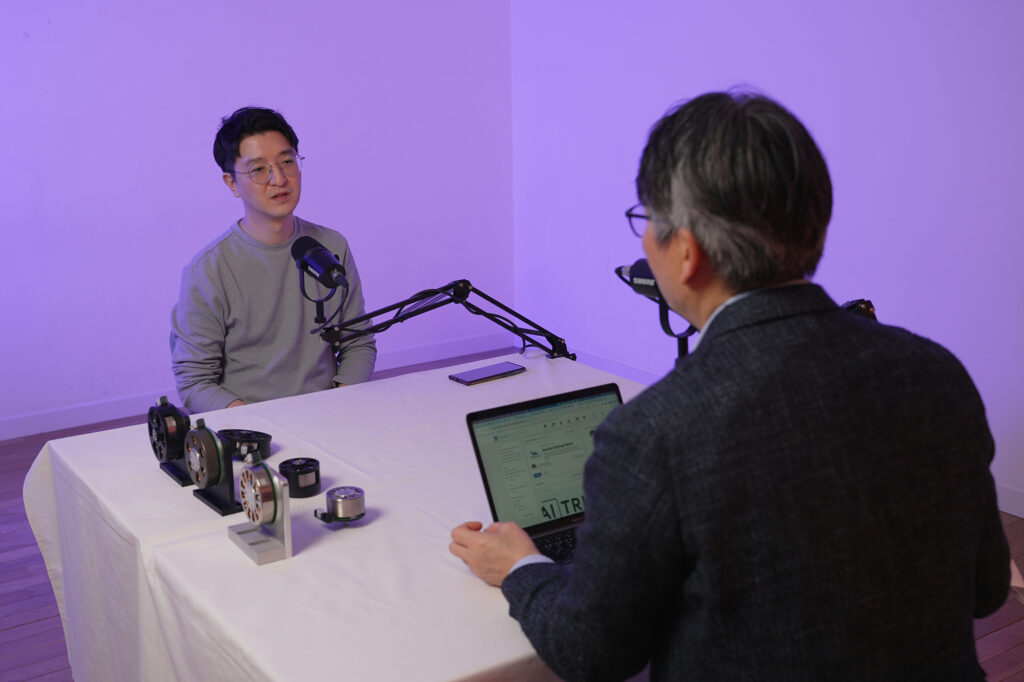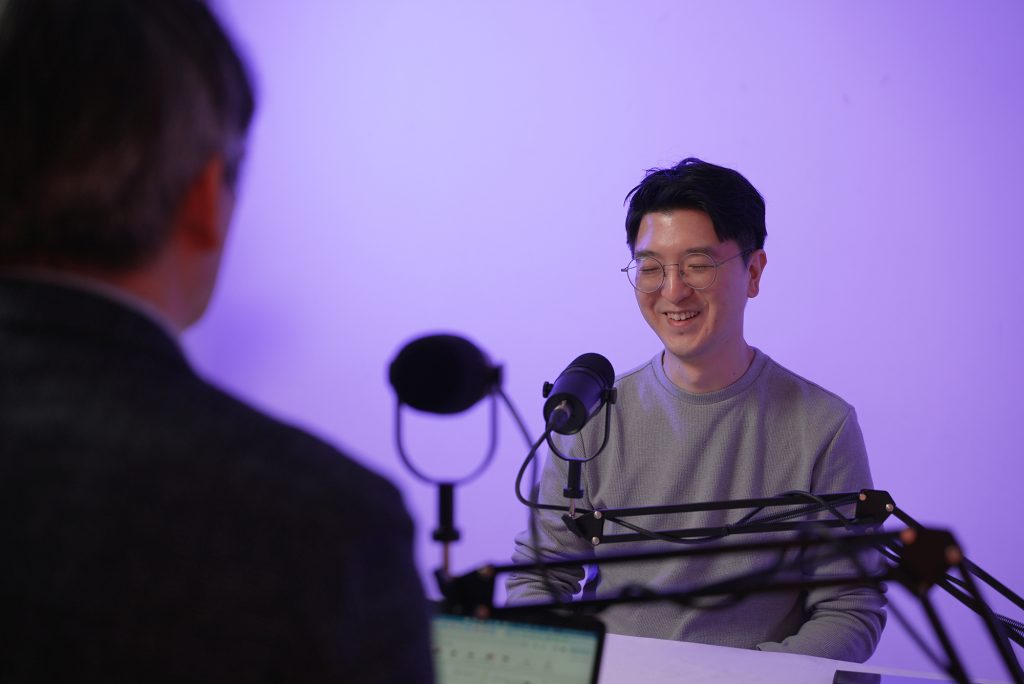Not long ago, many people witnessed a scene where a robot developed by the U.S. robotics startup ‘Figure AI’ handed an apple to a person. When asked to “give something to eat” among various items on a table, the robot chose an apple. This scene was a fresh shock and served as a signal that the era of robots understanding most human commands is approaching. However, what is needed to realize robots that are not only intelligent and strong enough to perform tasks well but also capable of controlling themselves in dangerous situations, such as collisions with humans? The answer lies in the implementation of a ‘servo motor’—a powerful yet precisely controllable driving force for robots.
The term ‘servo motor,’ used in machinery requiring precise control like robots, originates from the Latin word ‘servus,’ which shares its root with the English word ‘service.’ This means a motor that faithfully executes commands, where strong power and precise control are indispensable elements. However, many servo motors developed so far have been fast but weak in power. To compensate, the fast speed of the motor was gradually reduced through multiple gears, while the force was increased at the final stage. For example, if a motor rotates 100 times per second, two gears with a 1:10 rotation ratio are connected so that the final gear rotates only once but with increased force. As a result, high-stiffness, high-friction reducers became a constant companion of servo motors, leading to issues such as increased weight of the drive system. Moreover, forced deceleration often caused motors to fail to stop promptly in dangerous situations, posing risks to humans.
To address these issues, Faraday Dynamics (hereinafter referred to as Faraday) was founded in 2019 by CEO Jang Han-deut, who is also a professor at Incheon National University. Torque, the unit of motor power, is a key focus for Faraday, which has developed high-density, high-torque servo motors. Typically, increasing motor power involves either increasing the input current or strengthening the magnetic field of the motor’s magnets. However, increasing current quickly drains batteries and generates resistance and heat, reducing efficiency. Therefore, CEO Jang chose to enhance the magnetic flux of the motor’s magnets. Instead of using silicon-iron magnets in the stator, Faraday employs cobalt-iron magnets and arranges neodymium magnets in the rotor in a special configuration to strengthen the magnetic flux. As a result, Faraday’s servo motors demonstrate torque performance 4 to 14 times greater than global motor companies like Switzerland’s Maxon.
Faraday’s high-torque servo motors eliminate the need for heavy reducers to increase force, enabling the lightweight design of robots. Additionally, their low power consumption allows robots to operate longer. Faraday is realizing the core technology essential for the widespread adoption of robots. After years of research and development of various motor types, Faraday secured seed investment from POSTECH Holdings, Bigbang Angels, and Kingo Spring at the end of last year and is now preparing for full-scale motor production. The company was also selected for POSCO’s Idea Marketplace last year and Samsung Electronics’ C-Lab Outside program in February this year, further validating its technological capabilities.
CEO Jang Han-deut, who pursued his passion for creating human-like robots by studying at Osaka University in Japan for his bachelor’s and master’s degrees and earning a Ph.D. in robotics from KAIST in Korea, has been dedicated to robotics development, even minoring in biomedical engineering to replicate human-like robot joints. Recognizing the primary importance of high-torque servo motors in robotics innovation, he has focused on building Faraday as a specialized servo motor company. Now, with plans to mass-produce even more powerful servo motors and advance robot development, Faraday and CEO Jang’s journey are worth watching.
Faraday Dynamics’ business item is a servo motor for safe robot joint actuation in a world where humans and robots coexist. Many people think of motors as being used primarily for speed control, such as in electric vehicles or fans. However, motors used for controlling robot joints are specifically classified as servo motors, which are relatively expensive, high-performance motors designed for precise position (joint angle) control.
These servo motors have traditionally been installed in industrial robots used in factories for precise tasks. However, because these motors are weak in power but fast in speed, they have always been used with reducers. In other words, reducers use gears to slow down the motor’s high speed while increasing the force output.
However, such robots, due to the stiffness and friction of reducers, pose a high risk of injury to humans in case of collisions. The stiff image we associate with robots is largely due to reducers. Faraday believes that robots designed to coexist with humans must have flexible joints like humans while being capable of generating significant force. To this end, Faraday is developing and commercializing high-torque-density servo motors that can deliver high force relative to their weight.

The unit of motor power is called torque, expressed in Newton-meters (Nm), which combines force (Newton) and length (meters). Servo motors generate torque proportional to the electric field (current) and magnetic field (magnetic flux). In other words, high torque requires a large amount of current and strong magnetic flux. However, a large amount of current generates heat due to wire resistance and can damage wire insulation, leading to motor failure, limiting its use.
In contrast, magnetic flux does not generate heat even when used in large quantities, making it advantageous for stable torque increase. However, achieving this requires advanced technology to enhance the magnetic flux of magnetic materials, which has made commercialization difficult. Faraday has developed high-performance magnetic material technology and aims to commercialize a new paradigm of servo motors that were previously unavailable.
Faraday’s competitiveness lies in its high torque output (Nm) per unit weight (kg) of the motor, a key performance indicator for high-performance servo motors. By achieving higher torque output compared to competitors, Faraday has reduced the need for high-friction, high-stiffness reducers. This enables the implementation of safe robot joints and provides optimized solutions for wearable robots, walking robots, and other mobile robots through motor lightweighting and improved efficiency.
Faraday has completed the development of four motor models with diameters ranging from 30mm to 90mm. Through continuous R&D investment, the company is developing additional products to meet diverse customer needs. Current customers include government research institutes, universities, and corporate research labs developing robots. Typically, these customers purchase Faraday’s products when they are dissatisfied with the performance or design of existing motor manufacturers’ products.
In such cases, Faraday develops and supplies customized high-torque-density servo motors tailored to customer requirements, even if they differ from pre-developed products. Faraday is currently establishing mass production processes to increase production volume, reduce manufacturing costs, and expand into the domestic and global servo motor markets.
The servo motor market is primarily centered in developed countries, forming a market worth approximately 20 trillion KRW. The robot market, which relies on servo motors, is estimated at 5 trillion KRW domestically and 70 trillion KRW globally. While servo motors alone do not see high demand from general consumers, large and small enterprises entering the robotics market are expected to be key customers. Recently, demand for high-torque-density motors has also emerged in automotive electronics and home appliance sectors, prompting Faraday to prepare for expansion into markets beyond robotics.
Faraday supplies high-performance, high-torque servo motors to robotics companies, automotive electronics companies, and home appliance manufacturers. Since the motor business is fundamentally manufacturing-based and servo motors have relatively clear applications, the business model ultimately depends on how efficiently high-performance products can be produced at low costs to maintain competitive pricing. This is expected to significantly impact operating profits.
Currently, Faraday is establishing mass production processes to achieve groundbreaking cost reductions. The company is attracting investments in equipment and funding to support this. Faraday plans to offer products with significantly higher performance than expensive imported servo motors at comparable prices.

Last year, we were selected for the POSCO Idea Marketplace, and we are currently participating in the 2024 Samsung Electronics C-Lab Outside program, preparing for collaborations across various fields. Recently, we secured seed funding from POSTECH Holdings, KingoSpring, and BigBang Angels. This year, we are aiming to participate in the Deep Tech TIPS program to further refine our technology and focus on commercialization.
With our technology now reaching a mature stage, we plan to actively engage in sales and promotional activities starting this year. Our goal is to supply our products to research institutes and companies developing robots in various directions, thereby increasing our market share.
As the CEO of the company, I am currently a professor in the Department of Mechanical Engineering at Incheon National University. During my research on robotic actuators, I developed a high-torque-density servo motor and identified strong market demand for such technology, which led me to establish this faculty startup.
I obtained my bachelor’s and master’s degrees from Osaka University in Japan and my Ph.D. from KAIST in South Korea, specializing in robotics research throughout my academic career. I continue to conduct robotics-related research and will do so in the future. However, I chose servo motors as the primary business item for our company because, during my six years of study in Japan, I deeply realized the importance of the parts industry.
Seeing the dominance of Japanese companies in the bearing industry—often referred to as the “rice of the machinery industry”—I came to believe that high-performance servo motors could become the “rice” of the robotics industry. This led me to set the goal of establishing a world-leading servo motor manufacturing company. Although many robotics companies have recently emerged in South Korea, without a strong foundation in the essential components industry, it will be difficult to develop high-quality finished products.
Currently, our motor-related technology development is nearing completion, and we are actively recruiting personnel for production and manufacturing.
We invite investors to show keen interest in our journey.